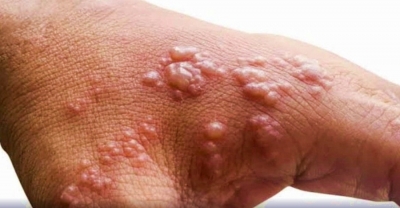New York, Oct 18 (IANS) A team of researchers has detected the monkeypox virus in the testes of macaques during the infection’s acute phase.
The study, published in the journal Nature Microbiology, indicates that the team found preliminary evidence of persistent infection in two animals that survived challenges with the virus.
Their results highlight the potential for sexual transmission of the virus in humans.
“We examined tissue samples obtained during both the acute phase of the disease, when the infection is at its peak and the convalescent phase, when the infection is gradually subsiding,” said researcher Xiankun (Kevin) Zeng, from the US Army Medical Research Institute of Infectious Diseases (USAMRIID).
“We detected monkeypox virus in interstitial cells and seminiferous tubules of the testes, as well as the epididymal lumina, which are the sites of sperm production and maturation,” Zeng added.
The ongoing monkeypox outbreak has been linked to sexual contact in patients with laboratory-confirmed infection.
As the virus can be transmitted through direct contact with bodily fluids and skin lesions, understanding the biology of monkeypox infection of the testes and virus shedding in semen has substantial public health implications.
For the study, the team performed a retrospective analysis of monkeypox virus infection in archival tissue samples from crab-eating macaques — a widely used non-human primate model for studying the disease and evaluating the efficacy of medical countermeasures, such as vaccines and treatments, against monkeypox.
Importantly, said Zeng, the team also found preliminary evidence of persistent monkeypox virus infection in two convalescent crab-eating macaques that survived challenge with the virus.
Using histological analysis to microscopically analyse the disease course in tissue samples, the USAMRIID team discovered that while the monkeypox virus was cleared from most organs — and from healed skin lesions — during convalescence, it could be detected for up to 37 days post-exposure in the testes of the macaques.
–IANS
vc/vd


Comments are closed.